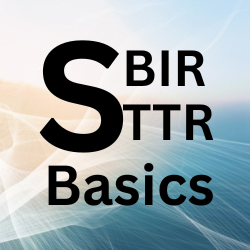If you’re preparing proposals for future work while managing a Small Business Innovation Research (SBIR) or Small Business Technology Transfer (STTR) award, it’s essential to understand how Bid and Proposal (B&P) costs fit into your indirect cost structure.
Under FAR 31.205-18, B&P costs are allowable—but only if treated correctly as indirect expenses and not billed directly to federal awards.
Let’s unpack how to stay compliant, avoid audit red flags, and maximize your indirect rate strategy with proper B&P cost treatment.
What Are B&P Costs?
B&P costs cover the time and resources used to prepare proposals for new work, whether federal or commercial. These costs include:
-
- Employee salaries and wages
- Fringe benefits associated with proposal work
- Overhead or G&A allocations on proposal-related labor
Key Regulation:
“The costs of preparing bids and proposals… are allowable as indirect costs, to the extent that those costs are allocable, reasonable, and not otherwise reimbursed.”
— FAR 31.205-18(b)
How FAR 31.205-18 Applies to SBIR/STTR Awards
Even though many SBIR Phase I awards are fixed price, that doesn’t exempt you from following proper cost allocation rules. B&P costs must meet three basic criteria to be allowable:
| Requirement | What It Means |
| Indirect only | Can’t be charged directly to SBIR/STTR awards |
| Properly documented | Must be tracked through Timekeeping & Accounting |
| Not reimbursed elsewhere | No “double-dipping” if a third party reimburses you |
So, if a private customer reimburses you for a proposal, you cannot include those hours or costs in your indirect pool.
Where B&P Costs Fit in Your Indirect Rates
B&P costs are part of the General & Administrative (G&A) cost pool, not the direct cost base.
Inside the DCAA ICE Model:
The Incurred Cost Electronically (ICE) model, used for submitting cost proposals and actuals to the DCAA, handles B&P costs as follows:
-
- Schedule B (G&A Pool): Include B&P salaries, fringe, and overhead here
- Schedule H (Direct Costs): B&P costs do not appear directly
- Supplemental Schedules (optional): Use to provide backup for B&P timekeeping
SBIR/STTR Proposal Work for Commercial Clients
Yes—proposal prep for commercial or private-sector opportunities is allowable under FAR 31.205-18. But the same rules apply:
-
- Allocate as indirect costs
- Track time separately in your system
- Maintain consistent treatment across all proposal types (federal and non-federal)
DCAA expects uniform accounting treatment. If you include federal proposal prep in your B&P pool, you must also include commercial proposal costs.
Common Mistakes That Trigger Audit Issues
Avoid these missteps to keep your B&P costs DCAA-compliant:
| Mistake | Why It’s a Problem |
| Charging proposal costs directly | Only allowed when explicitly authorized in the Request for Proposal (RFP). |
| Not tracking B&P hours separately. | Creates cost misallocation and audit exposure |
| Excluding non-federal proposals from the pool | Causes inconsistent cost allocation |
| Double-charging B&P time | If reimbursed elsewhere, it’s unallowable to include |
Best Practices for SBIR/STTR Founders
Even if you’re a solo founder or a tiny team, follow these guidelines to manage B&P costs correctly:
-
- Track all proposal prep time using a compliant timekeeping system
- Allocate through your G&A pool—never charge directly to SBIR awards
- Maintain documentation showing B&P costs by project or customer
- Include private sector proposals in your B&P tracking
Proper B&P accounting lays the foundation for future cost-type work and smooth audits, even on fixed-price contracts.
Why It Matters for SBIR Phase II and Beyond
Correctly handling B&P costs helps you prepare for:
-
- Phase II cost-reimbursement contracts
- Provisional billing rate submissions
- DCAA and other audits and
- Indirect rate negotiations
Your long-term credibility and cost recovery potential depend on treating B&P costs accurately and consistently.
Final Word
-
- Don’t guess or cut corners.
- B&P costs are allowable—but only when treated as indirect, documented, and not reimbursed elsewhere.
Need help setting up your indirect rate structure, DCAA-compliant timesheets, or an ICE-ready cost pool? I can help you build a compliant system that works—whether you’re a team of 10 or 1.

